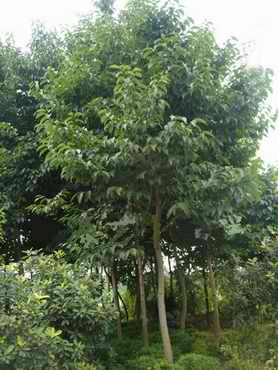Eucommia ulmoides TREE SEEDS
Eucommia bark and tea, herb and leaf by Ray Sahelian, M.D. index of Integrative medicine
Eucommia Ulmoides – Du Zhong – Tochu. For a list of herbs used in chinese medicine, see Chinese Herbs.
Eucommia Ulmoides Chemical composition
Eucommia has many substances including: geniposidic acid, iridoids, aucubin, gallic acid, protocatechuic acid, chlorogenic acid and caffeic acid, (-)epicatechin, catechin, n-octacosanoic acid), tetracosanoic-2, 3-dihydroxypropylester, rutin.
A new flavonol glycoside, quercetin 3-O-alpha-L-arabinopyranosyl-(1–>2)-beta-D-glucopyranoside, and known flavonols kaempferol 3-O-beta-D-glucopyranoside (astragalin), quercetin 3-O-beta-D-glucopyranoside (isoquercitrin) were isolated from the leaves of Eucommia ulmoides.
Historical uses of Eucommia
Eucommia ulmoides leaves have been used as a folk remedy for the treatment of diabetes in Korea. The bark and leaves of Eucommia ulmoides Oliv (Eucommiaceae) have been used as tonic and anti-stress drug in china.
Benefit of Eucommia
The extracts of Eucommia show anti-hypertensive, anti-complementary, anti-oxidative, and anti-gastric ulcer effects, and promoting collagen synthesis, accelerating granuloma formation, and other pharmacological effects. Water extracts of Eucommia eaves have been reported to have potent antioxidant and antimutagenic effects.
Availability
Eucommia is sold as bark extract or as eucommia tea, or mixed in a wide range of formulas.
Eucommia ulmoides Research study
Endothelium-dependent vasorelaxant effects of the aqueous extracts of the Eucommia ulmoides Oliv. leaf and bark: implications on their antihypertensive action.
Vascul Pharmacol. 2003. Kwan CY, Chen CX, Deyama T, Nishibe S. HSC-4N40, Department of, Medicine, Faculty of Health Sciences, McMaster University, Hamilton, ON, Canada
The vascular effects of three extract preparations from the Chinese medicinal herb, Eucommia ulmoides Oliv., which is historically an active ingredient commonly used in antihypertensive herbal prescriptions in China, were investigated with isometric contraction using isolated rat aortic and dog carotid rings. Both aqueous extracts isolated from eucommia leaf (L) and bark (B) concentration dependently caused endothelium-dependent relaxation in vessels precontracted with 1 microM phenylephrine (PE), but the methanol extract of the leaf (M) had no effect. Vessels precontracted with KCl and de-endothelialized vessels precontracted with PE were not affected by B or L. The endothelium-dependent relaxation evoked by B and L was either abolished or substantially inhibited by NG-nitro-L-arginine methyl ester (L-NAME) and methylene blue (MB), indicating the involvement of the nitric oxide (NO) synthase pathway in the vasorelaxant action of B and L. The relaxation to the aqueous extract of eucommia bark was not inhibited with 1 microM atropine, but was inhibited by 3-5 mM tetraethylammonium (TEA) and 3 mM 4-aminopyridine. This suggests that the endothelium-dependent, NO-mediated relaxation evoked by the aqueous eucommia extracts was not mediated via the activation of endothelium muscarinic receptors and may involve the activation of K+ -channels. Results in this study have provided the first evidence on the in vitro vasorelaxant action of Eucommia ulmoides Oliv. that forms the pharmacological basis for its well-documented antihypertensive action.
Is eucommia the same as eurycoma?
No, they are different herbs.

.jpg)
